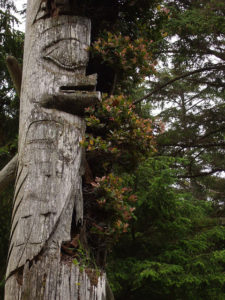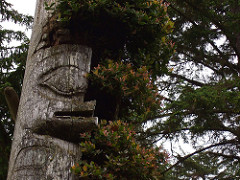
An essay moving between philosopher of science Isabelle Stengers, Haida mythteller Skaay, and the North Pacific Ocean.
In Flemish (transl. Samuel Vriezen) in nY issue 32, Jan 2017, a special issue on Isabelle Stengers; or read my English original here.
“What strikes me, as a modern student of the non-human members of Skaay’s marine landscape, is the intricacy and thoroughness with which wealth and catastrophe are interwoven there. Every hard surface on Haida Gwaay is covered with exuberant, insistent living matter, and the deep water that fuels this exuberance with its upwelled nutrients is the same deep water that corrodes oyster shells. Salmon stocks in this part of the world, for their own climatic and ecological reasons, have always fluctuated by a factor of ten from year to year, as well as in grand cycles that take a millennium to complete. Thus it is likely that Skaay was deeply prepared to tell a story that, like a palimpsest, reflected both the catastrophe at hand—the visitors from outer space who threw down both endless wealth and genocidal levels of disease and manipulation—and also a state of ecological affairs so fundamental it might as well have been metaphysics. I feel a direct, humbling kinship between my own work in mathematical ecology and Skaay’s construction. The stories he told in 1900 seem to me a set of experiments and simulations built to probe catastrophe, map the fractal boundaries of its basin of attraction, mark down the initial conditions from which human and trans-human affairs roll down into that basin. Like an ecologist, and more than Stengers, he lingers over Gaia’s portrait, using spare, precise lines to mark her way of moving, where she places her feet. Like Stengers, and unlike most ecologists, he is equally concerned with the dynamical attractors of human thought and emotion.”
